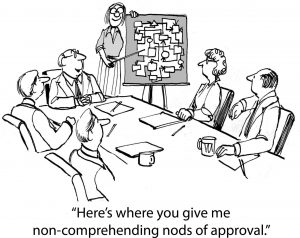Updating PowerPoint organizational charts 360x faster
Have you ever been asked to make a small update to an org chart?
At first glance, it seems like such a quick task. There’s no way that “making Sharon’s team report to Joyce” will take much time at all. So, without even realizing you’re about to do something endlessly frustrating, you fire up PowerPoint with your latest org chart.
The first problem hits you in the face. The org structure is too big to fit on one slide. It is split over dozens of slides. Finding Sharon’s part of the org and Joyce’s part of the org and viewing them both on your screen at the same time proves difficult.
No more illusions about this being simple. This will be hard, but you’re set on delivering this for your boss. You try to get through these steps as quickly as possible:
- Find all of the boxes that represent Sharon’s organization unit
- Cut Sharon’s boxes and connectors
- Rearrange the the rest of the boxes on the slide so they look nice
- Find all of the boxes that represent Joyce’s organization unit
- Make room for Sharon’s boxes on Joyce’s slide
- Paste Sharon’s boxes
- Adjust all of Sharon and Joyce’s boxes so that they look good and are legible
- Go back over every slide to do some “quality assurance”
- Save and send the new org chart to your boss
- Hope that there are no more “small updates” to your org chart
Is that your experience? If not, I’m starting to doubt you’ve ever worked with an organization chart in PowerPoint before.
If so, then you’re in luck. We did this same task with OrgWeaver in 5 seconds. Watch the video below to find out how OrgWeaver is 360 times faster than PowerPoint in making this small org chart change. Imagine what OrgWeaver could do for big organization changes.


